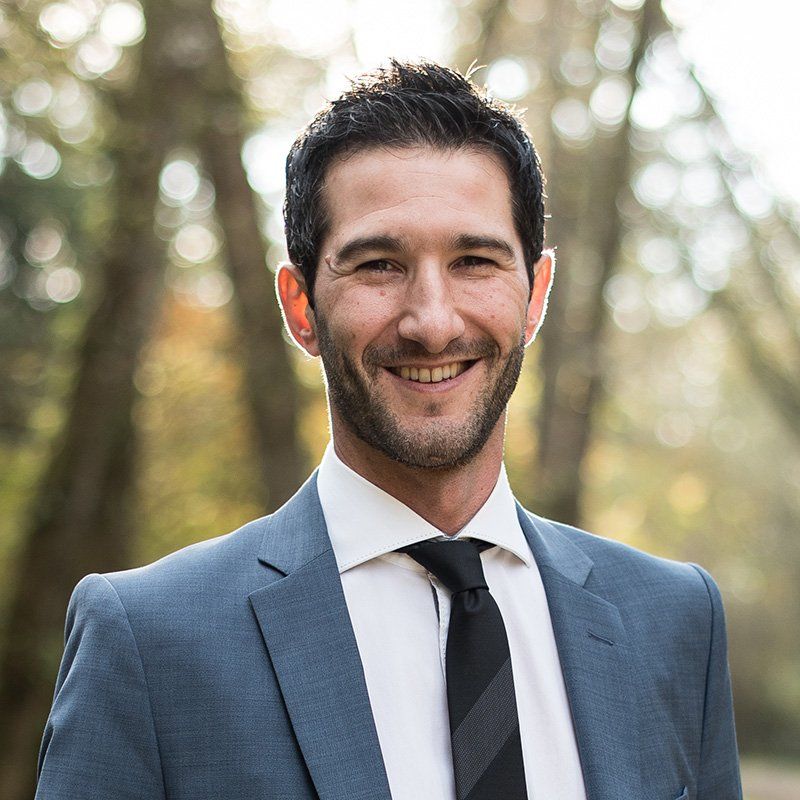How to Save Money for a Downpayment
Whether you want to set aside money to buy a car or take a vacation, save up for a down payment on a property, or plan for your retirement, the principles are the same.
However, as you’re reading this article on a website dedicated to helping you secure mortgage financing, we’ll assume you want tips on how to save for a down payment!
The key to saving money is getting clarity - clarity around your income and your expenses, developing and following a clear plan, and seeking help from professionals who can help you see the big picture as well as the details. Although this might seem fundamental, sometimes going back to basics is the best place to start.
Assess your income.
If your goal is to save money, you’ll need to identify just how much money you’ve got to work with! The best way to do this is to write everything down. This could be with paper and a pen or on a spreadsheet; whichever way works best for you is fine. The goal is to have all your income in front of you!
If you’re on a fixed income or receive a salary for work, your calculations might be pretty simple. Use the income you actually take home, not your gross income. Include an average of your variable income sources like tips, overtime, bonuses, or shift differentials. You should also include other income sources like an annual tax return, and child tax or other government benefits.
Spend time to make an exhaustive list of all your income sources.
Track your expenses.
Once you’ve identified what you have to work with on the income side, the next step is to figure out just how much you actually spend to maintain your current lifestyle.
Start by identifying regular bills, then look at your discretionary spending. If you have a budget already in place, you should be able to identify these numbers easily. If not, you can expect that getting clarity around your expenses will be very enlightening. It will be helpful to look through a few months’ worth of bank statements to see just how much money you actually spend.
Information is the key to finding clarity. The more information you have, the more equipped you will be to save money. Just like your income, write down all your expenses. This will allow you to assess and reprioritize where you spend your money.
Develop and follow a plan.
Once you have a clear picture of your income and expenses, you need to figure out how to make more money than you spend. Although that sounds so simple, it really isn’t. The majority of Canadians incur debt because they spend more money than they make. This is why saving money can be so hard.
But if we’re going back to basics, remember this: if you’re spending more money than you're making, you need to either increase your income or decrease your expenses to start saving money. There are countless money-saving strategies on the internet; consider following a few financial bloggers, and have fun learning about what works best for you!
Seek help from professionals.
You’re probably here to learn about how to save money for a down payment because you want to buy a home soon. If that's the case, be assured you're in the right place. Putting together a plan to secure mortgage financing is one plan you don't have to make on your own.
As independent mortgage professionals, it’s our job to help you navigate all aspects of mortgage financing. Just like saving for a down payment is about managing income and expenses, so is getting a mortgage. Income and expenses, along with credit and property, are what a lender looks at when assessing your suitability for a mortgage.
So while you might assume that putting together a plan to save for a down payment is where you should start, it might not actually be the best place to start. Saving money takes time, and while you're doing that, there are many other things you could be doing at the same time, like building credit to increase your chances of qualifying for a mortgage sooner.
When you’re ready to assess your financial situation and put together a plan to save for a down payment and get into a mortgage sooner, please get in touch. It would be a pleasure to work with you.
SHARE
-
One of the most common questions, “how long does it take to get pre-qualified?” My response, “how fast can you provide the information I need.”Button
-
Playing in the forest today. Always fun exploring. #mountainbikingmortgagebrokerButton
-
Mortgage Brokering meets mountain biking and craft beer. A couple months ago I set for a bike ride with the intention of answering few mortgage related questions, mission accomplished. Any good bike ride pairs nicely with a tasty beer which we enjoyed @parksidebrewery. Hope you see the passion I have for brokering, biking and beer. @torcabikes #mountainbikingmortgagebrokerButton
-
My thighs were cold all day, it was ‘that’ deep. I was choking on snow all day.Button
-
The weather report was 36 cm of new snow, it was more like 45-50 cm of light deep powder. Insane day of skiing.Button
-
Spotted a ski-bunny today @kirstinjhallett so I trapped ‘er. 📸 credit @troy.hartleyButton
-
Aidan leading the pack up the Lemming Line in seek of fine fresh powder.Button
-
Beautiful British Columbia! A cold winter day at its finest.Button
-
Aidan and I braved the -19C temperature and windy conditions for the boot to knee deep turns...it was a no-brainer.Button
-
Happy Holidays. Seasons Greetings. Merry Christmas. All the best from Kirstin, Aidan and Michael. Enjoy your family time.Button
-
Snow report for today was boot to knee deep in places. Simply an awesome day rippin’ with the kids, I had to show them that I still got it. 📷 credit @jhalskiingButton
-
It’s that time of year for my annual post, the Christmas Tree pilgrimage. The only that changes year after year is that Aidan gets taller! Not to worry though, the Canadian tuxedo jacket remains the same. HAPPY HOLIDAYS everyone. Much love to all.Button
-
Fresh wood in the morning...where is this treasure trail going to take me?Button
-
TEASER alert...at thats what I think they call it in the business. Years ago a wrote a blog called BEERS BIKES AND MORTGAGES. I some how (in my head) blended all 3 topics into 1 blog. Simply put, I enjoy aspects of all 3 with each of them providing something different. I re-united with the talented Regan Payne on a project that I think will shed a bit more light on who I am and what I do. #craftbeer #mountainbike #mortgagebrokerbc #dlccanadaincButton
-
Here is to looking forward past injuries, feels good to be riding again. It was a 18 week grind!Button
-
Extreme tubing, watch until the end. Aidan manages to hold on.Button
-
Lake life as a passenger is a good life. Captain @kirstinjhallett . #woodlake #kalamakalakeButton
-
Yet another reason why our license plates say BEAUTIFUL BRITISH COLUMBIA on them. An evening enjoy the view on Pitt Lake.Button
-
Surfing! Don’t need functioning hands to surf. It was nice to do something active. Thanks @jordspring #sakinawButton
-
Good thing there were a few other vehicles with winches on the front.Button
-
He was OK, thumbs up. The roll cage and 5-point seat belt did its job.Button
-
My sons intro to operating a side-by-side on his own. Watch to the end.Button
-
The Lookout over looking Tulameen BC. Took some 4x4ing to get there, but we did it.Button
-
The day started out great. Exploring the back country roads of BC, Stave Lake area. Views of Alouette Lake in the backgroundButton
-
Impromptu ride on Burke. I dreamed of the day Aidan would ask to go for a ride...today was the day, “Dad do you want to go for a ride?” Heck ya, let’s go! This was a fun feature at the end.Button
-
An afternoon of exploring the Stave Lake zone. Planning to return soon once the snow melts to get some vertical.Button
-
Found a fun little gap-drop to session. I have my moments when I like my tires leaving the ground.Button
-
This would have been a fun stunt once upon a time!Button
-
And so it begins...another tool for adventuring! So different so fun!Button
-
You know it’s steep when your hand is touching the snow, high risk high reward.Button
-
The snow report suggested 8 cm had fallen, it was more like 25-30 cm.Button
-
Now that he has a dirt bike the hunt is on for me too. This is the first ride trying to figure out the timing of the throttle, clutch and brake...second ride was even better.Button
-
Exploring Pinecone Burke Provincial Park a month ago with @troy.hartley. Standing in the site of the old ski lodge.Button
-
A well weathered tree coming through yet another winter with Yak Peak 2,039 metres in the background. Putting my limited artist talent to the test, these iPhones and filters making anybody a photographer.Button
-
A successful reconnaissance mission we crossed Falls Lake, ski toured up towards Zopkios Peak 1921 m. It was a exceptional picnic destination. The skiing was shit!Button
-
Who’s is going to go first?...I’ll go if you don’t! No friends on a powder day! @j_penner70 📷 @sheascottcolpittsButton
-
An epic day. Everything was perfect. Depth of Snow. Visibility. Temperature. Even the company.Button
-
In the green room today on the best coast amidst winter...not a bad place. 📷 @dgm_imagesButton
-
I saw this hat on Instagram, that very moment I knew I needed it. As a BC boy born and bred The Outdoorsman hat needed to be added to my collection. As someone who loves BC and most things outdoor, I’m now glad I have a cool hat to wear and fly the flag of BEAUTIFUL BRITISH COLUMBIA. It will be in my bag for all post-exploration celebratory cold pints. If you want to check them out or add one to your collection go to @nineoclockgun ...and yes my facial hair matches the hat as well.Button
-
When two of your ski buddies are 13 years old, you know you’re raising rippers. @paigerrileyButton
-
My ski buddy getting untracked turns. It was knee to thigh deep all day for him, only shin to knee for me.Button
-
We went for a snowshoe this afternoon, but we probably should have considered taking our flippers instead. Our timing was off by one day.Button
-
From sea to snow capped peaks, it’s obvious why Vancouver and BC continue to be one of the best places to live. It’s engraved on our license plates, BEAUTIFUL BRITISH COLUMBIA.Button
-
Ancient blue glacier ice craving out deep valleys. It’s pretty cool standing underneath one...photo credit @dustanwoodhouseButton
-
This is a great start to the day!Button
-
No better way to share the great outdoors than with friends. @troy.hartley @mike_ilic711 @j_penner70Button
-
The ski out back to the truck was more of an adventure than we bargained for...Button
-
Exploring the BC backcountry, it did not disappoint...it never really does.Button
-
Thank god we are all narcissistic and have the ability to take pictures of ourselves 🤪. This is taken pre-turkey dinner, I’m sure we will all be back in our comfy clothes soon! Merry Christmas!Button
-
The crew shredding some turns , it was a 23,000 vertical foot kind of day.Button
-
Happy belated Hanukah, Merry Christmas and Happy Holidays to all. Be sure to enjoy the festivities.Button
-
Top of Swan Falls. I’ve said it many times before and I will say it again, our license plates say it all. BEAUTIFUL BRITISH COLUMBIA. #gooutsideButton
-
The coveted annual mission to get our Xmas tree, with of course my Canadian tuxedo jacket on.Button
-
Yet another reason (unlimited really...) of why the Left Coast is the best coast! @tami0777Button
-
Moss, a non-vascular plant and Mother Nature’s carpet reclaiming the forest.Button
-
Capitalizing on a break in the wet coast rain storms.Button
-
Just follow the brown line switchbacking through Mother Nature. She’s so damn beautiful!Button
-
Day 3 for Black Magic was a bit snowier than initially expected. Thanks to the person who took a few minutes to build a snow creature.Button
-
Beauty day for a ride! I should have considered bringing my touring skis.Button
-
The West Coast is the Best Coast. #nofliter at sunset.Button
-
This was Day 1 on my @yt_industries Capra Pro 29. I thought the last bike was the best, it was a Capra Pro 27. I never thought the small differences in geometry and wheel size would have such a huge positive impact on my riding. Boy was I wrong! Best bike ever!Button
-
Oh boy! See a toy...buy a toy! New steed! YT Capra Pro 29 hitting the trails soon.Button
-
A tasty beverage while on the water yesterday from @backcountrybrewr and @backcountrybrewingButton
-
Epic ride with boys yesterday. Into the Mystic, Last Call, Happy Hour and Lord of the Squirrels. 5 hrs 15 mins, 31 km and 1,397 vertical metres.Button
-
Whistler slick rock is my favourite.Button
-
Wood to wood gap in Whistler.Button
-
Passing underneath the Ironworkers Memorial Bridge on the return journey of dinner-by-boat. No filter.Button
-
And now the training starts for Paris 2024 summer olympics.Button
-
Archery target: before, during and finished.Button
-
Aidan’s first day in the Whistler Bike Park, he had a blast and we rode trails I didn’t think we’d ride 😳. I’m sure we’ll return soon enough.Button
-
A rare sighting at the Whistler Bike Park, it’s been at least 10 years.Button
-
When the opportunity presented itself, I couldn’t pass up one of my favourite slick rock rolls.Button
-
Pre-dinner antics...it’s totally safe!Button
-
Aidan is captaining the watercraft, mom in just the passenger. Kalamaka Lake.Button
-
#Drewmboat camo @parksidebreweryButton
-
Safety first when roasting marshmallows.Button
-
Great place to press snooze for 20 minutes. Chez Labowka.Button
-
Raw kale. Just not the same as a kale caesar salad.Button
-
Saratoga Beach fire.Button
-
Canadian tuxedo.Button
-
Happy Canada 🇨🇦 Day to everyone near and far. I hope it’s a kick ass day. Play safe.Button
-
The @yellowdogbeer squirrel chaser or otherwise known as the chew toy was a hit with me and Moka LabowkaButton
-
It’s always fun to start the trail with a repel. #mountainbike #climbingButton
-
It only took me a half dozen or so tries but I managed to cross the halfway line. This old guy still has it! Fun times.Button
-
Follow your path, at times you never know where it’s going to take you. Trust the outcome. Having fun in The Green Room.Button
-
This old guy was collecting a few air miles today.Button
-
Going vertical. #slickrockButton
-
I have a ski buddy, now it’s time to train a biking buddy.Button
-
I’m really looking forward to riding this gem once it re-opens. #burkeinmybackyardButton
-
Enjoying a distanced beverage with @senorwad @yellowdogbeerButton
-
Aidan and a couple buddies are now members at the Pitt Meadows Golf Club. @greggmcnally @genevemcnally @wendy22boddy @jaradboddy @kirstinjhallettButton
-
Raw and unedited. Old school skinny with a drop at the end.Button
-
I’m still HOME ALONE! Looking forward to the day when I’m able to have some friends over to share these @backcountrybrewing Widowmaker IPAs. #backcountryphotocontestButton
-
Zoa Peak, Coquihalla summit 1,500 vertical metres of skiing.Button
-
Distancing myself from the real world!Button
-
The dry land version of the @andrei_svechnikov37 lacrosse-style goal executed Aidan.Button
-
Skis or bike? Bike. The snow won’t stop me.Button
-
Does anybody need or want any firewood? It’s free...you come pick it up.Button
-
I needed to buck up the trees they fell in the last wind storm. Task complete.Button









































































































